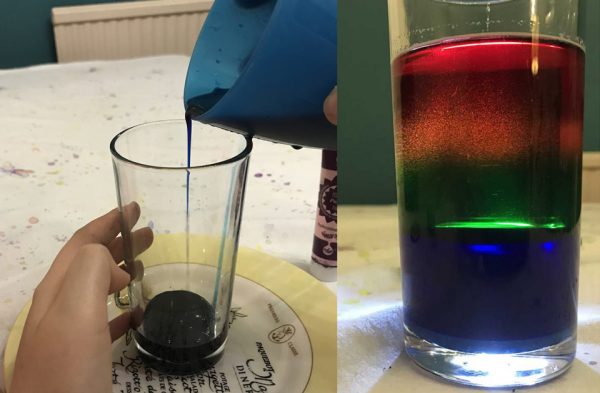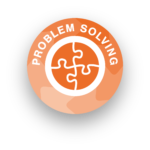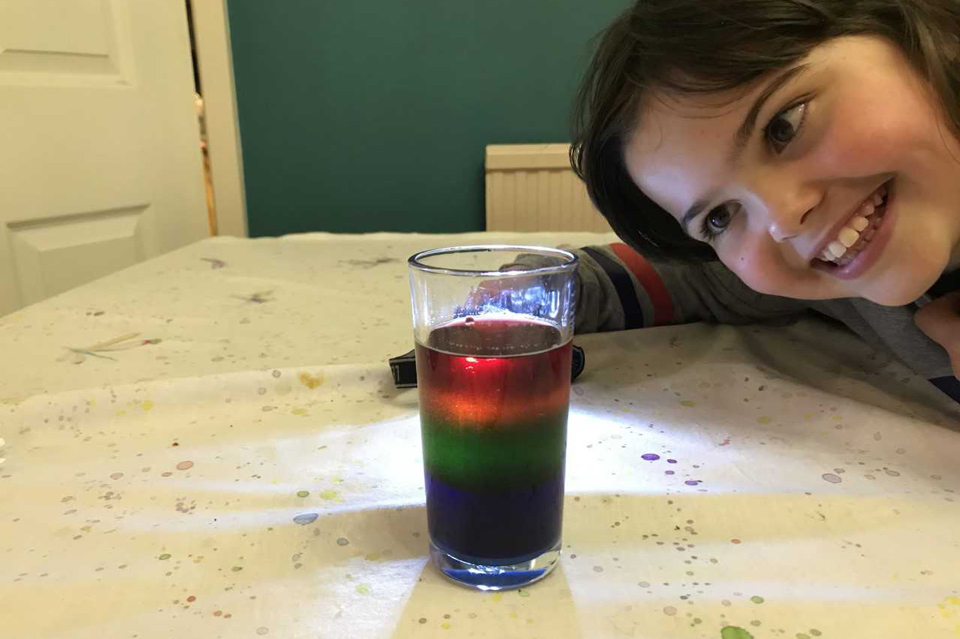Insects, stars, the periodic table… your child is super-keen on science and just has to know more. Indeed, their passion for the subject far exceeds what you expected was usual for their age. They don’t like basic ideas but crave challenges and problem-solving: they might even long to show that they know specific scientific vocabulary. Get the science flowing with these deeper content activities.
Space Challenges
What does your child with high learning potential know about the Moon? Can they describe what a crater is? Help them to visualise the moon’s surface.
You will need:
Newspaper, a pan, flour, cocoa powder, pepper, cinnamon, icing sugar, a marble and small objects such as pebbles or coins to create the mini craters.
- Lay newspaper down on the floor and put the pan on it.
- Using a sieve, help your child cover the pan base evenly with 5 centimetres of flour.
- Dust a layer of cocoa powder on top, then add pepper, cinnamon and the icing sugar.
- Let your child drop in the marble from waist-height. There should be a mini crater, then let them make a few.
Find out more about craters at: https://spaceplace.nasa.gov/craters/en/ and watch a relaxing video NASA posted recently looking at the moon to the accompaniment of Claude Debussy’s Clair de Lune https://youtu.be/zNpsy6lBPBw
Our Epic Environment
Children love to jump in puddles, however your bright child may also be questioning you about why the world has so much water! Help them to explore their environment.
Wind
It wouldn’t be Britain without windy weather! Make a wind spinner with your child so they can do their own wind speed experiments.
You will need:
5 paper cups, a hole punch, 2 plastic straws, a stapler, drawing pin and a pencil with a rubber tip.
- Take one of the paper cups and punch four evenly spaced holes in it, just below the rim. Punch another in the bottom centre.
- Take another cup and punch just one hole, below the rim. Push the straw through it, fold the end of the straw and staple it to the inside of the cup. Repeat this with another cup.
- Now attach these two cups to the four-hole cup, sliding each straw through two opposite holes, so the straws cross in the centre.
- Attach another one-hole cup to the end of each straw. The cups should lie on their sides and face in the same direction around the middle cup.
- Push the pin through the straws where they cross in the centre.
- Push the pencil rubber-side up in the bottom hole of the middle cup.
- Push the pin into the rubber to finish the wind spinner.
Help your child find out more about gusts and breezes and discover more wind experiments at: https://www.science-sparks.com/wonderful-wind-experiments-for-kids/
How Much Rain?
Learn about the right weather conditions needed for growing plants. Discuss what conditions are needed and the impact of the wrong conditions on soil and crops.
- Ask your child to fill a glass with water. Measure 15 centimetres off the ground and pour the water onto one patch of flat and loose soil. What does your child see happening?
- Refill the glass and let your child pour it onto another plant-free soil patch from a height of 30 centimetres. Is there a different outcome? Follow up with a chat about erosion: discuss how roots of trees and plants help keep soil together, even when the rain is heavy. Soil: https://www.kidcyber.com.au/soil . Erosion: https://www.kidcyber.com.au/erosion
Track It!
Have you been down in the woods today? Add an imaginative twist to the nature walk – give your child the freedom to find and follow any animal tracks. (No woodland nearby? Even your garden or a small playground could yield some surprises.) Help them to practice reasoning (e.g. what might that animal have been doing) and spatial skills (which animal’s foot fits and how might the ground’s surface influence a foot print shape?). Find out more about making a cast: https://www.rspb.org.uk/fun-and-learning/for-kids/games-and-activities/activities/animal-tracks/
Radiant Rainbows

Meld creativity with science in this experiment. It will suit a curious child who enjoys independence and applying maths in their learning.
Set out five drinking glasses, sugar, water, and four colours of food colouring.
- Ask your child to weigh out one tablespoon of sugar into the first glass, two tablespoons for the next, three for the next then four for the fourth glass.
- Let them stir three tablespoons of water into each glass. Then add three drops of food colouring, using a different colour per glass.
- Give your child a fifth glass and help them to work out where one quarter full is. Ask them to add a coloured solution to that level. Slowly spoon a different colour solution on top, until the glass is half-full. Repeat with the others. What have they made? Why are the solutions layered in a different order? What would have happened if the layers were mixed differently?
- This experiment can keep its layers for several days. Try monitoring and recording the changes to the layers and solution.
Remember that your child’s science ability may show itself in different ways and will develop with age. For example, they may be methodical in the way they plan and reason but not yet have learned to be careful recording the results. Find ideas to support their strengths and weaknesses, and help them find other children who are curious about science with whom they can enjoy projects.
Keep stoking up their scientific passions!








